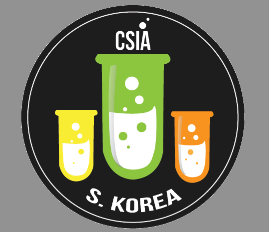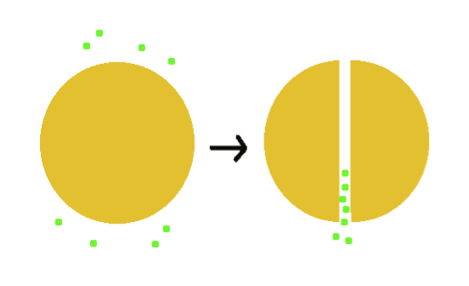Team:CSIA SouthKorea
From 2012hs.igem.org
Our team is consisted of four students who are fond of thinking creatively, sharing our knowledge with others and making contributions to the society. We hope that iGEM 2012 could be a great opportunity for us to get our feet wet in the field of synthetic biology and interact with many other students around the world who are also interested in this field!
||- | Tell us more about your project. Give us background. Use this as the abstract of your project. Be descriptive but concise (1-2 paragraphs)
||- | |align="center"| Team CSIA_SouthKorea |}
| Official Team Profile |
|---|
Contents |
Team
Brainstorming
Ideas from imagination
Lactose intolerance curing E. coli
We thought about the mechanism of making E. Coli to do apoptosis when there is excessive nutrient in human colon (e.g. when a lactose intolerant individual intakes dairy product) so that it prevents excessive growth of E. Coli culture and reduces lactose-intolerant symptoms, such as diarrhea.
- Mechanism step (hypothetical) 1. Sensing lactose
- We could not find an adaptable lactose-sensing gene. Therefore, it would be better to adopt the glucose sensing mechanism of Baker's yeast.
- Put in lactase making gene inside the E. Coli's DNA. Put in the spliced mRNA version (of course it would be transferred into DNA by using reverse transcriptase before putting the mRNA strand into the E. Coli's gene) of Baker's yeast's glucose-sensing gene.
- When there is lactase inside human colon, the lactase-producing gene will express and E.Coli will produce lactase.
- Lactase will decompose lactose into galactose and glucose.
- The glucose sensing gene will detect glucose.
- Mechanism step 2. Apoptosis signal
- In ‘Baker's yeast’, the gene HXT is expressed when glucose is detected. Instead of HXT, if we put the gene that induces cell death in parts registry, we predicted that the cell will apoptosis when the glucose is detected.<ref>The EMBO Journal vol. 17 no. 9 pp.2566-2573, 1998 Glucose sensing and signaling by two glucose receptors in the yeast
Saccharomyces Cerevisiae</ref>
- Things to consider :
- Since the cell should not die from the signal it sent to itself, the genetically modified E.Coli should be resistant to the apoptosis signal sent from itself. Further, the power of the signal should be controlled in its time and magnitude.
- Comments from the professor and advisors
- - I would like to know whether the fact ‘lactose-intolerant symptom is created by excessive growth of e.coli inside human intestine’ is true. It would be better if you include the related papers or references that you found during the research.
- -Because lactose is comparatively rich carbon source, E.coli will have various lactose-sensing system.
- -When the gene that leads the death of cell is inserted into E.coli, it is possible to recognize lactose as gene expression signal and kill the E.coli that is not manipulated. But it seems hard to kill the natural E.coli that is in the human body. Even if it is possible, the corresponding host will also be recognized as a target. In that case, before sufficient amount of substance is made, host will be killed by the initially-generated ones. We need to think of another strategy.
Cholesterol Degradation
- This idea derived from an imagination to divide the macromolecular oil into several parts, as illustrated above. We primarily focused on our research of steroid compound degradation and enzyme that activates the process.
- The literature search was done on a very basic level. Pseudomonas sp. NCIB 10590 & Bacillus subtilis are able to degrade cholesterol to lower level. In human body, DHCR7 gene codes enzyme 7-dehydrocholesterol reductase. Gordonia cholesterolivorans (e.g., G. sihwensis, G. hydrophobica, G. australis, and G. neofelifaecis) has genes that codes cholesterol oxidase.
- Comments from the professor and advisors
- -Excess cholesterol may create various diseases, it is still true that cholesterol is essential in many biological processes. Breaking down cholesterol when its concentration is high would be desirable, but it is not that unique.
Ideas based on previous iGEM teams
Glowing Bacteria
We came up with the idea of glowing bacteria to use it as a reading lamp. Our school always shut all the electricity on 1:00 a.m. so we have to go to sleep. So, even though when we have important homework or tests coming up, we cannot study longer than 1:00 a.m. Because of this uncomfortable system, we thought of glowing bacteria that can flow without electricity so that we can stay up late and study more(really?).
- bioluminescence
- While searching for glowing bacteria, we found out that a Netherland company, Philips electronics, developed glowing bacteria that is fed with methane and produces luciferase to glow. However, they had a limitation: they said that their bacteria produces low-intensity light that it cannot be used as reading lamp. ☹
- We found another project of making glowing bacteria. This was done by Cambridge in 2010 for iGEM. They didn’t use GFP as a glowing material. Instead, they used v. fischeri lux operon. What they did was by using long-range PCR, they extracted luxCD, luxAB, and luxE individually and assembled them into new operon. And they used Gibson Assembly to make operon consisting Lux C, D, A, B, E under the arabinose-induced promoter pBAD which can activate without the gene regulator, LuxR and AHL. Also, they had made h-ns mutants that produce much brighter light than wild type strain. This gave us a hope to make a reading lamp using glowing bacteria!
Cobalt Buster
Team Lyon-INSA-ENS proceeded “Cobalt Buster” project about creating a bioremediation system of using Escherichia Coli biofilm to filter radioactive cobalt from contaminated water from nuclear reactors. Reflecting the fact that the formation of E. Coli biofilm is mainly caused by the production of curli, they worked on overproduction of curli, which is a highly adhesive amyloid protein.
- Understanding of the project
- They used two different approaches on doing this: one is a completely synthetic approach of creating an independent curli synthesizing pathway, and the other is activating the existing curli synthesis pathway by cloning the superactivator ompR234 gene.
- In addition, they tried to improve their strain by making their strain auxotrophic, which therefore prevent dispersion of the strain, and by inserting the transporter gene directly in the efflux pump gene. They used “Quick & Easy E. Coli Gene Deletion Kit” to delete a gene of amino acid biosynthesis and made their strain unable to survive without a medium that contains amino acid. Also, accounting that the transporter features are located on a plasmid that may not be stable and a Kanamycine resistant gene in rcnA gene knocks out the rcnA gene, they inserted the transporter feature in the rcnA gene.
- They insist that they succeeded in capturing up to 85% of the radioactive cobalt, which seems to be a successful result. Nevertheless, there are also some parts that must be improved in order to be able to be used in the real-life nuclear reactors. The temperature of the primary circuit can rise up to 327 degree Celsius; however, the adequate temperature of their biofilm is between 20 degree Celsius and 45 degree Celsius. This means that there must be four to five hours of interval before opening the reactor and passing the contaminated water through the filter, which inevitably causes economic inefficiency. In addition, in primary circuits, cobalt may exist both as ions and as particle; however, the scope of this project is limited to capturing cobalt ions and could not yet reach the ability to capture cobalt particles.
- Improvements
- Being highly interested in this project, our team thought of some ways to make significant improvements on the “Cobalt Buster” project. First, in order to improve the heat resistance of the E. Coli biofilm, we thought of adding clpK gene, which is known to “render an otherwise sensitive E. Coli strain resistant to lethal heat shock”.
- More specific plans and idea regarding the capture of cobalt particles are soon to be considered and updated.
Project
Diary
- 2012.02.16: meeting with professor
- -Our team had a meeting with professor In-Geol Choi in order to discuss our topic for the igem project. We had some creative ideas of our own, but we weren’t sure if they were appropriate topics for this project. As our discussion went on, professor Choi gave us some advices in selecting the topic:
- -First, the project should have some kind of purpose – something like ‘saving environment’. We need to synthesize and create biological machine of certain function that can fulfill the fundamental purpose of our own.
- - Second, considering that we don’t have much time nor the professional knowledge for the research and experiments, as high school students, it might be more appropriate to work with relatively easy project. He recommended us to do some research on websites such as biobuilders, and read about some labs that students can conduct.
- -Third, note the parts registry that we can use. In parts registry site ( http://partsregistry.org/Catalog) we can find out which devices and functions we are able to use, and that will help us with selecting our topic. We decided to consider these points and brainstorm more about the topics. We are to determine our topic by the end of this February.
- 2012.02.20: ideas, ideas, ideas
- -We first start to have an idea of making glowing bacteria to use it as a reading lamp. And having done some research, we found out that most of the glowing products were containing a protein called GFP (green fluorescent protein). To make a new challenge, we thought of making a new color of light other than green light. However, we soon found out that other great scientist have already made numerous mutation of GFP and produced many other colors. So, now… we are stuck!!!
Results/Conclusions
What did you achieve over the course of your semester?
Safety
Attributions
Human Practices
Fun!
References
<references/>
<forum_subtle />
 "
"

